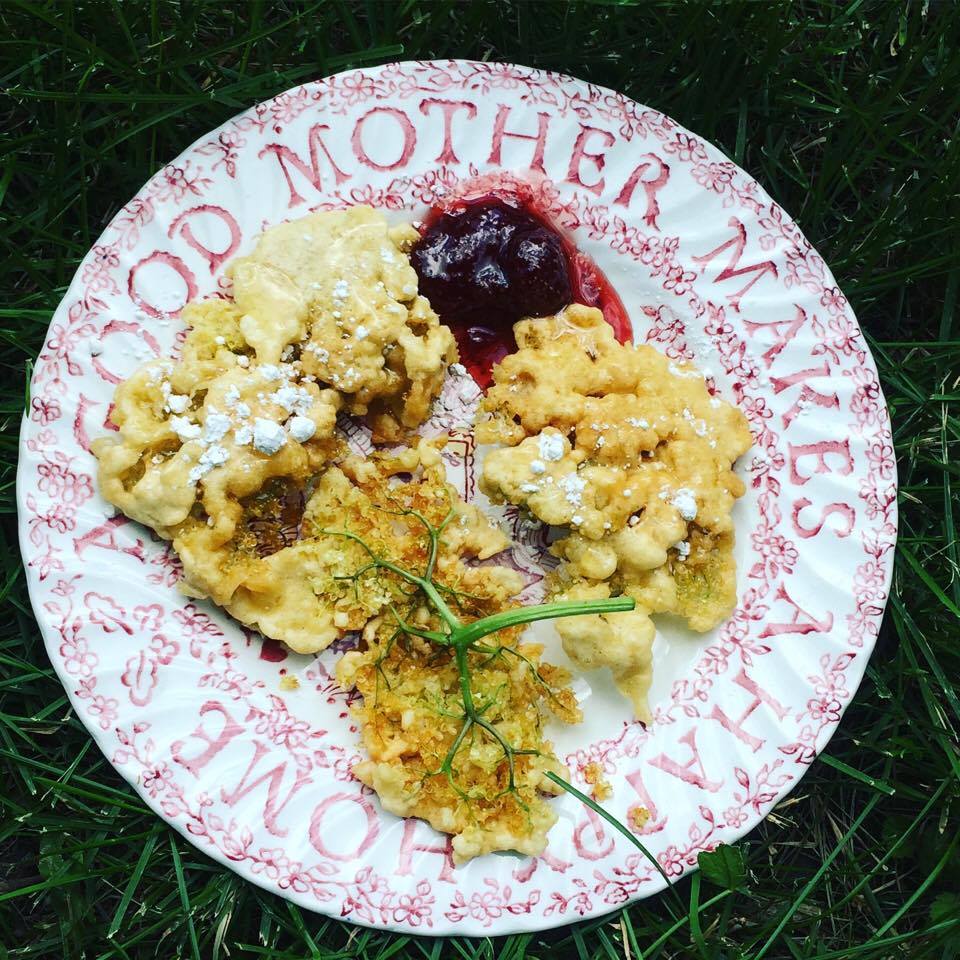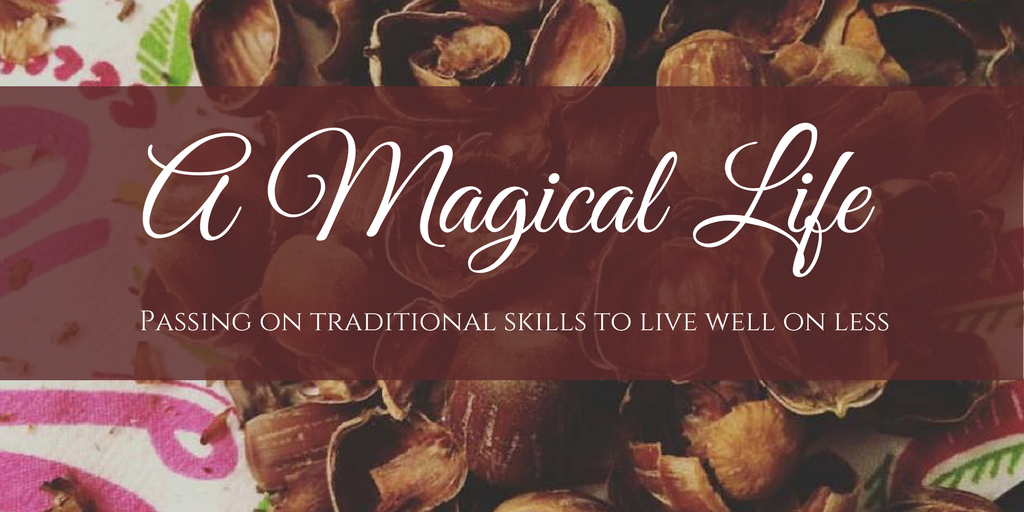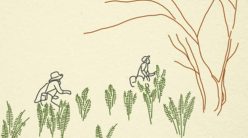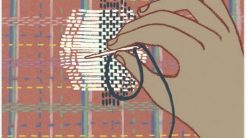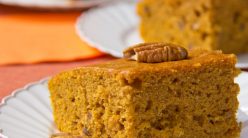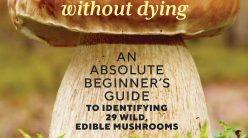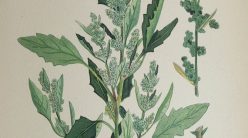I read The Joy of Foraging: Gary Lincoff’s Illustrated Guide to Finding, Harvesting, and Enjoying a World of Wild Food while vacationing at a friend’s house, courtesy of her library book pile. It’s a good book to get from the library before purchasing it to get a feel for whether it will be a good fit for you, and also to get an idea of all the wild plants out there that you can look into.
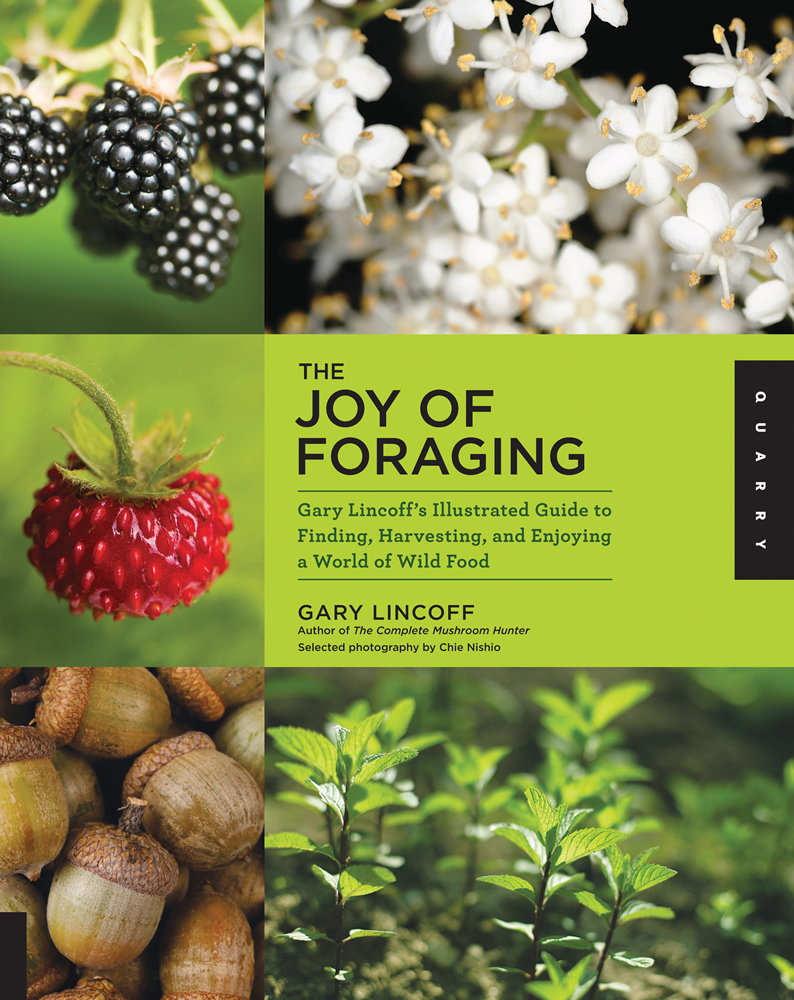
There are areas where I’d like to give this book 5 stars and lots of other areas where I’d like to give it one. I was so frequently annoyed and frustrated by this book, but in other ways I really enjoyed reading it.
First the good:
1) It’s full of full-color photos that can help get you acquainted with the wild foods that are all around you.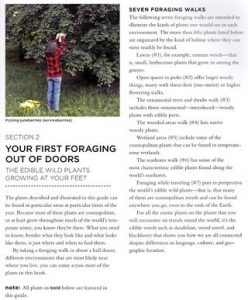
2) It covers a large selection of wild plants — about 80, I believe.
3) It’s a pretty quick read, with just a small bit of information on each plant (this can be a pro or a con, obviously).
4) The author has an interesting approach to familiarizing people with wild edible plants, by talking about which ones you can find in other places like farmers’ markets to get to know them before you hunt for them.
5) I like the short section in the beginning where he breaks down the types of places to forage and what you can find in them (places like city parks, your own back yard, forests, etc.). I also like that he talks about which season to find many of the plants in this section.
Now the bad:
1) There isn’t enough detail about the plants, including how to prepare them or full ID information. You would definitely need a companion book to actually ID the plants you went looking for.
2) The author rarely mentions how the plants taste. I consider this rather unforgivable, since you want to know whether a plant is going to be worth the trouble for you and also how you’re likely to want to cook it.
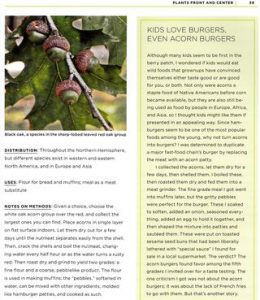 3) As a reviewer on Goodreads commented, some of the advice is bad or wrong. I was also really disappointed in the acorn section but I thought it might be because I’ve written a book on acorn foraging and that my standards might be too high. As that reviewer mentioned, the author shows pictures of green acorns and only mentions hot water leaching. Though the method he describes is a valid one that many foragers use, his suggestion to boil the acorns in repeated changes of water for at least 2 hours is utterly insane — different acorns have different amounts of tannins in them and they can take as little as 15 minutes of boiling water leaching and are likely to have no taste left at all after that long. There were many other times where I was rather shocked at the advice and disagreed, and I also agree that it was bizarre to say that Jerusalem artichokes should be eaten raw.
3) As a reviewer on Goodreads commented, some of the advice is bad or wrong. I was also really disappointed in the acorn section but I thought it might be because I’ve written a book on acorn foraging and that my standards might be too high. As that reviewer mentioned, the author shows pictures of green acorns and only mentions hot water leaching. Though the method he describes is a valid one that many foragers use, his suggestion to boil the acorns in repeated changes of water for at least 2 hours is utterly insane — different acorns have different amounts of tannins in them and they can take as little as 15 minutes of boiling water leaching and are likely to have no taste left at all after that long. There were many other times where I was rather shocked at the advice and disagreed, and I also agree that it was bizarre to say that Jerusalem artichokes should be eaten raw.
4) The author name drops about knowing Euell Gibbons quite a lot, but he lacks Euell’s passion for wild edible plants. This was one of the areas where I was most disappointed. The author is a teacher and an expert on identifying plants, but he clearly lacks the passion for wild edible plants that so many of us have. Euell Gibbons’ books are delightful in part because his enthusiasm is contagious, and he so obviously loved eating and otherwise using the plants that he wrote about. This guy doesn’t even really seem to enjoy the foods he lists (and in some cases it’s no wonder, as he has pretty awful recommendations for how to prepare some of them).
5) The author frequently says there are no poisonous lookalikes or lookalikes in general for plants that definitely do have lookalikes. Perhaps to someone trained in identifying plants, these plants are clearly different from others. There were many plants he listed as having no lookalikes that certainly do to me. Elderberries are one example. While there aren’t any lookalikes once you know to look at all parts of the plant (bark, flowers, fruit, leaves, etc.), it’s easy to get confused if you only look at the berries or flowers. As most readers here know, I have a book about foraging elderberries and I included a section showing the differences between elderberries and elderflowers in comparison to other berries and flowers that are sometimes confused for them. It’s true that it’s very easy to tell the difference once you know what to look for, but you don’t get that confidence without really seeing the differences or hearing them spelled out.
6) There are very few recipes. There isn’t even basic information like a list of popular ways to cook the foods. In almost every case, the author listed just a couple of ways to use the plants as if the list were exhaustive. Again, I know I’m prone to higher standards because I write specialized books about specific wild foods and I have the luxury of being able to really get into how to find and make the best use of wild foods. Still, it was discouraging to see so little listed for each plant. In my elderberry book, I have around 70 recipes for medicinal remedies, jams and jellies, alcoholic beverages (wines, liqueurs, etc.), non-alcoholic beverages (elderflower soda, tea, etc.), desserts, and so on. In the elderberry/flower section of this book, the author said something about the berries being used for jellies and the flowers fried as fritters. He didn’t even mention the famous anti-flu elderberry syrup that is the reason so many people look for elderberries in the first place. This is true of so many plants in the book. We make use of about half the plants in the book, and in every case I wanted to chime in, “They’re even better if you use them for xyz!”. Ramps, nettles and crab apples are three examples where our family has a lot of favorite ways to enjoy them that were not mentioned (and again, very few uses were listed for these wonderful wild edibles).
7) Ranges and growing zones are not really covered. The author mentions very vague information for where plants grow in North America, but it’s very frustrating because it’s hard to know if a plant listed grows in your state. Maps would be very helpful, or even general zones.
8) It was clear that the author is not experienced in using many (maybe most) of the plants in this book. In some cases he even talks about trying a food once and not liking it or trying it again. In another case he describes a way of identifying a leaf “according to the internet.” I really recommend getting foraging information from authors who love the foods they write about. You don’t just want to know how to find a plant but why you want to, and what to do to make the most of it once you do find it.
All that said, I did really enjoy the book. As an experienced forager, I used it as eye candy to remind myself what to look for and to help make my mental list of wild edible plants to try next. I really loved all the photos and it was fun to read a foraging book in a different format from most out there.
Also, to be fair to the author, you can’t have a book listing 80 wild edible plants and go into any kind of detail without publishing a 500-page encyclopedia. This book is quite affordable in part because of its size, and is best suited for an introduction to whet your appetite, not a complete guide. It is likely to inspire readers to want to know more about foraging for wild edible plants in their area. Once you get to that stage, I recommend checking out some general ID books from the library to find your favorites (buy the ones you like best for your home library) and also getting to know some of the best foraging blogs out there.
It’s impossible to learn about foraging from only one book, but this one makes a great piece of the puzzle.
Note: This post contains affiliate links. Purchases made through our links earn us a small commission at no extra cost to you.
